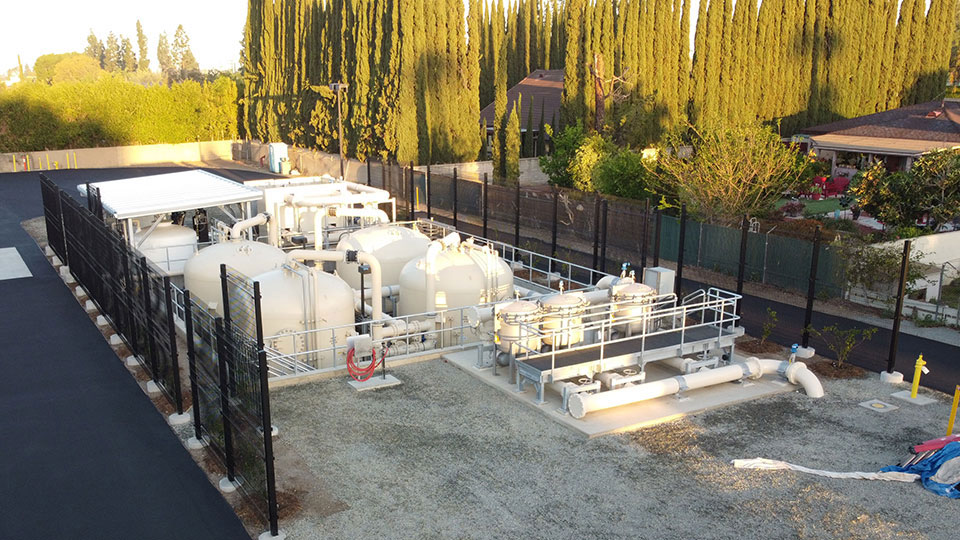M270 PFAS Treatment for Sustainable Waste Management
M270 PFAS Treatment for Sustainable Waste Management
Blog Article
Innovative PFAS Treatment Solutions for Safer Water
The increasing prevalence of PFAS contamination in water materials requires a critical assessment of innovative therapy remedies. Advanced filtering technologies and unique chemical therapies existing encouraging opportunities for reducing these consistent contaminants. Additionally, arising bioremediation techniques use an even more sustainable method to tackling PFAS difficulties. As regulative frameworks continue to adapt, recognizing the efficiency and scalability of these solutions ends up being critical. What implications do these developments hold for public health and wellness and environmental remediation, and how can stakeholders successfully apply them in diverse contexts?
Introduction of PFAS Contamination
PFAS contamination has actually become a significant ecological and public health concern. Per- and polyfluoroalkyl compounds (PFAS) are a team of synthetic chemicals understood for their persistence in the atmosphere and body, leading them to be commonly referred to as "forever chemicals." These substances have actually been widely used in different markets, including firefighting foams, water-repellent fabrics, and food product packaging, mostly because of their water- and grease-resistant buildings.
The widespread usage of PFAS has actually resulted in their detection in soil, water materials, and even in the blood of human beings and pets. Studies have actually connected PFAS direct exposure to many wellness concerns, including developmental impacts in babies, body immune system dysfunction, and various kinds of cancer. Furthermore, the ecological persistence of these compounds complicates their degradation and elimination, elevating problems concerning long-lasting ecological impacts.
Governing bodies are increasingly executing strict guidelines to keep track of and reduce PFAS levels in alcohol consumption water and other environmental tools. As understanding of PFAS contamination expands, it has become important for areas and industries to look for effective treatment solutions to reduce exposure and guard public health.
Advanced Filtration Technologies
As the necessity to resolve PFAS contamination heightens, advanced purification technologies have actually arised as a pivotal part in the removal efforts focused on getting rid of these persistent chemicals from water resources. These modern technologies take advantage of sophisticated systems to effectively target and capture PFAS substances, which are notoriously resistant to traditional treatment approaches.
Among one of the most promising approaches is the use of granular triggered carbon (GAC), which adsorbs PFAS molecules because of its high area and permeable framework. This technique has actually been commonly carried out in both metropolitan and industrial settings, demonstrating considerable decreases in PFAS concentrations. Furthermore, ion exchange resins have actually acquired grip, especially created to uniquely bind PFAS ions from water, hence promoting their elimination.
Membrane filtering innovations, such as reverse osmosis and nanofiltration, additionally show efficacy in PFAS removal by physically separating pollutants from water - pfas management. These systems can attain high levels of purity, making them ideal for alcohol consumption water applications
Chemical Therapy Developments
Many chemical therapy technologies are being explored to effectively resolve PFAS contamination in water materials. One encouraging method involves the use of innovative oxidation processes (AOPs), which utilize powerful oxidants such as ozone, hydrogen peroxide, or chlorine dioxide incorporated with UV light to click reference break down PFAS compounds right into less damaging compounds. This method has actually demonstrated efficacy in laboratory setups, showing prospective for scalability in real-world applications.
An additional innovative technique is the growth of ion-exchange materials particularly created to target PFAS. These materials can selectively adsorb PFAS compounds from water, allowing for their elimination throughout my explanation therapy processes. Recent improvements have actually enhanced the performance and ability of these resins, making them a favorable choice for water therapy facilities.
Additionally, researchers are investigating making use of chemical agents like persulfate and ferrous ions to boost the destruction of PFAS in contaminated water. These representatives can cause chain reaction that help with the breakdown of consistent PFAS substances.
Emerging Bioremediation Strategies
Current improvements in chemical therapy innovations have paved the method for discovering bioremediation strategies as a practical option for resolving PFAS contamination. Bioremediation uses the natural metabolic procedures of bacteria to deteriorate or transform toxins, making it an appealing approach for tackling consistent pollutants like PFAS.
Arising strategies in bioremediation consist of making use of genetically crafted microbes that can especially target and break down PFAS compounds. These microbial stress are being created for their boosted deterioration capacities, enhancing the effectiveness of the remediation procedure. In addition, researchers are exploring the capacity of plant-assisted bioremediation, where certain plant types may uptake and sequester PFAS from polluted soil and water.
Another appealing technique is the application of bioaugmentation, which involves introducing beneficial microorganisms right into infected environments to improve the degradation of PFAS. This technique can facilitate quicker removal timelines and enhance total efficiency.

Regulatory Frameworks and Criteria
A thorough regulatory structure is essential for successfully managing PFAS contamination and making sure public wellness defense. The raising recognition of per- and polyfluoroalkyl compounds (PFAS) as toxic wastes has triggered different federal and state firms to develop standards that regulate their visibility in water materials. The U.S. Epa (EPA) has established wellness advisories and is pursuing establishing enforceable restrictions for PFAS in drinking water.
State-level laws differ substantially, with some states embracing stricter standards than those suggested by the EPA. These policies usually include maximum impurity degrees (MCLs) for particular PFAS compounds, surveillance requirements, and reporting obligations for water energies. In addition, arising structures concentrate on the removal Discover More of contaminated sites, emphasizing the need for efficient therapy technologies.

Verdict
To conclude, the advancement and application of innovative PFAS therapy remedies are important for dealing with the pervasive issue of water contamination. Advanced purification technologies, chemical therapies, and emerging bioremediation strategies jointly offer a complex strategy to efficiently minimize and degrade PFAS degrees. As regulatory structures remain to evolve, incorporating these innovations will be vital to guard public health and recover the honesty of contaminated water sources, inevitably adding to a cleaner and safer setting.
Report this page